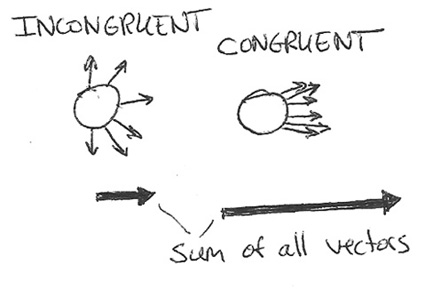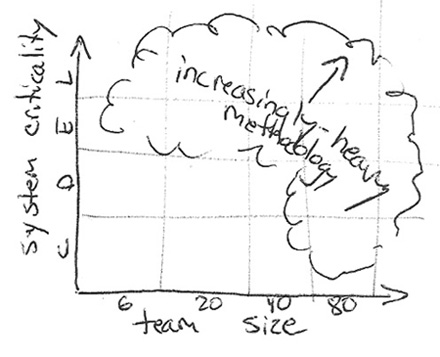Well file this one under the Rant category (with a capital "R") – if you’re not in the mood for a solid Wed-morning rant session, definitely skip this post… People that know me are aware that I have been engaged in a battle against the City of Scottsdale and Arizona American Water Company along with a handful of other people from my neighborhood for the past year. This all started about this time last year when we were told they would be building a massive arsenic treatment facility in my backyard and constructing these enormous football-field-sized tanks that would eclipse the view our neighborhood has of Camelback mountain. I’m not going to re-hash the details of all the deception that was involved on their part in the process of pushing this project through, how it was a profit-motivated venture for a private company slid through under the guise of a public safety concern, nor will I explain the major failure on the part of our City Council to stand up for the neighborhood (my neighborhood actually created an entire web site to do just that). After exhausting all the possible avenues in the government appeal process, we were eventually driven to filing a lawsuit against the City of Scottsdale and AAWC to try and obtain a preliminary injunction to stop this madness. On a shoestring budget against a multi-billion-dollar international utility conglomerate, we managed to hold our own in court and present a compelling case (big ups to Jim Palecek of the firm Hunter & Palecek), however, in an absolute mockery of justice, the judge (having sided with us throughout the six-day trial) flipped 180deg against us in the ruling and turned down our motion.
Last night was our last ditch effort to stop this project by presenting the new evidence that came to light during the discovery phase in the litigation that clearly showed the water company had misled neighbors and City Council to obtain the permit for their facility. The end result of last night was that we were completely blown off- it was an absolute charadeof-a-hearing.. After sitting 3.5hrs through some of the most mundane beauracratic BS, listening to complaints about the nuissance of the whine from those motorized scooters, we finally were able to present our case. You wanna talk about nuissance How about a 28′ wall of steel that spans a football field in length and blocks out the sun in a historical preserve! Well we might as well have been presented to a brick wall. Half the Council members got up and went to the bathroom, one guy (Littlefield) seemed to be reading his mail and perhaps playing solitare under his desk (I kid you not, he ducked down and emerged like a minute later, maybe he took a power-nap, I dunno but I’m bummed I’m paying his salary). With the exception of one guy for whom I have the utmost respect (Ron McCullagh), we have possibly the most dense lineup of idiots running our City. At this point I can confidently say I would be more comfortable randomly selecting a handful of lobotomized monkeys to staff the Council – at least the decisions that emerged wouldn’t be marred by "protect-your-ass" political self-serving motivations.
It’s one thing to see ignorance in action but what happened tonight was a pure, sinister squelching of a legitimate cause by a group of concerned property owners that have collectively spent thousands of hours and dollars fighting this issue over the last year. While the Council members may have evaded responsibility in this instance and dodged the massive shame they deserve for their handling of the matter- I will just say "you may be able to foil the legal and governmental processes, trash justice and democracy and evade accountability for your actions/inactions, but the one thing you cannot outrun is karma." Just look at the online petition we have, read the comments and tell me how ninety homeowners can be this pissed off if you really had followed due process like you claim!! Now think back to a time when you failed to stand up to a bully on the playground when you wished you would have- well we have no regrets here: we looked this bully that is AAWC square in the eyes and made our stand. I read the response from the president of AAWC, and I used his for the only thing it was good for and responded back personally with a letter of my own. Imagine what it’s like to donate hundreds of hours of your free time to a cause you know is just only to have it ultimately trampled by the very people whose sole job it is to protect your interests- the elected idiots that realize they screwed this up and are now tryinig to minimize how bad they look publicly by sweeping things under the rug and smiling the whole time smug with the knowledge that they are safe. Well I got two words- Google PR6 yatches – though I hate to taint this space with a rant like this, this story needs to be told. Anyways, I’m done now. I would just like to give a final "tip ‘o the middle finger" to a few of the spineless bad guys that managed to get away unscathed from this whole situation. In no particular order, they are:
Paul Townsley, Rob Antoniak, John Berry, Joe Gross, Susan Bittersmith, Glen Hallman, Technical Solutions, Arizona American Water Company, City of Scottsdale, Mayor Mary Manross, Betty Drake, Wayne Ecton, Jim Lane, Robert Littlefield, and Kevin Osterman – you guys rock. NOT.
(and I promise to keep the quotient of rant-to-content minimal from now on ;-)
© 2005 Lights Out Production – All Rights Reserved Worldwide

 My Takeaway – Prior to buying this book I had heard Alistair
My Takeaway – Prior to buying this book I had heard Alistair






